-
Car Reviews
- All reviews
- Midsize SUVs
- Small cars
- Utes
- Small SUVs
- Large SUVs
- Large cars
- Sports SUVs
- Sports cars
- Vans
Latest reviews
- Car News
-
Car Comparisons
Latest comparisons
- Chasing Deals
Great Wall Motors has become GWM and the Chinese brand’s ute has followed suit by transitioning into a product that finally seems worthy of attention … or is it? We’re finding out over six months and 10,000km of tough testing

It’s been nearly 60 years since Japanese car brands set the blueprint for how to make an impact in Australia – offer a stylish product chock-full of equipment, and then don’t charge very much for it. And it’s exactly that thinking that underpins a vehicle like the Chinese-made GWM Ute.
Cleverly rebranded (from Great Wall Motors to GWM) in order to distance itself from its inadequate predecessors, the GWM Ute offers more metal for the money than any other dual-cab in Australia, and backs up that value proposition by offering a few enticements all of its own.
A top-spec turbo-diesel dual cab with a seven-year warranty, a standard eight-speed automatic and everything but the kitchen sink for just under $41K? You better believe it. How about full-time 4WD and enough screen action to rival a teenage sleepover? The GWM Ute Cannon-X has got you covered.
Indeed, there’s been so much interest in the GWM Ute that it’s been a smash hit on YouTube and managed to rack up 6906 sales in Australia in 2021 – hence why we’ve decided to run a bells-and-whistles Cannon-X as a long-termer, commandeered by staff videographer Alek Hoskins.
We’ll update this review with new entries over time as we detail our experiences in the GWM Ute Cannon-X, which we’re running for six months and 10,000km.
| Kilometres this month | 2065 |
| Fuel economy this month | 10.0L/100km |
| Running costs this month | $365.30 |
The time has finally come to hand back the keys to our GWM Ute and after six months, we can happily confirm that no feature, nor claim of capability, has been left untested.
From trips across the outback, facing all kinds of challenges on the Chasing Cars Dual-Cab Megatest and just generally being at the mercy of videographer Alek Hoskins’ right foot, the GWM Ute has experienced a lot – but has it done so without breaking a sweat?
With 12,117km on the odometer at the time of handover, the interior of the GWM stood up remarkably well to punishment; with no obvious squeaks and rattles and even the digital driver’s display and accompanying 9.0-inch touchscreen remained glitch-free for our entire tenure.
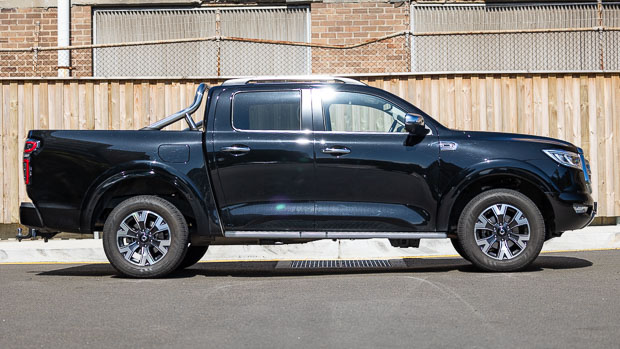
The same was true for the oily bits underneath, which emerged problem-free after traversing some brutal terrain and enduring searing temperatures in the outback.
But even in perfect working order, the 120kW/400Nm 2.0-litre turbo-diesel four-banger remains a weak point in this ute, which is not only less powerful than every other ute in it class but also motivates a vehicle that’s quite a bit larger than many of its rivals.
GWM was able to get around the limitations of this engine somewhat by mating it to a smooth eight-speed ZF-sourced automatic transmission to eke out some extra grunt, though sadly the ’box has a tendency to hang onto higher gears when more power was needed.
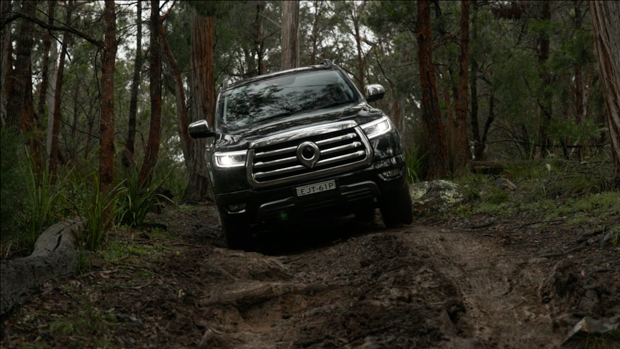
Despite this, however, the GWM Ute still used an average of 10L/100km during our tenure, a figure which is par for the course with diesel utes in Australia – but remember that other rivals in this segment will give you a lot more grunt for your dollar.
Assuming you’re not in a hurry then, what else does this Chinese-built ute have to offer? Well it’s certainly very comfortable, as many of my colleagues found out during our road trips together. This is largely thanks to its supportive synthetic leather seats, spacious cabin and soft (albeit, often unwieldy) suspension setup.
With the bulk of the GWM’s controls integrated into the dashboard, the cabin of this Chinese-built ute is undeniably clean in its appearance, however, by robbing the user of physical air conditioning controls, we think this has been taken a step too far.
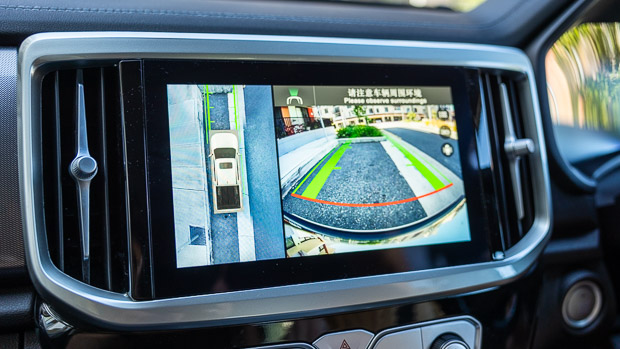
It’s likely to be a sticking point for many Australian buyers, with Ford Australia recently pointing to overwhelming customer feedback as a key reason for retaining physical air conditioning buttons in the new T6.2 Ranger.
Buyers should also note that the GWM Ute has seen several price increases since it went on sale, with our Cannon-X now priced at $45,490 driveaway – $4500 above what our MY21 model cost when we picked it up late last year, but there have also been some changes made along the way.
Most notably, GWM has been working to make its ute safer, with all models built from August 2021 onwards equipped with a five-star safety rating – a big win for the thousands of buyers who increasingly use their ute as family cars.
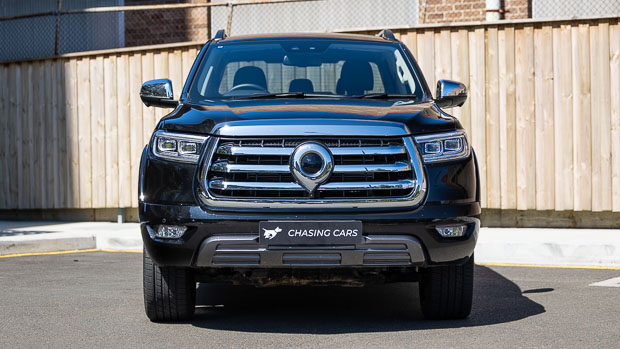
While we commend this pursuit of safety, it’s also important that the equipment is tuned well for Australian conditions, and the combination of an aggressive lane-keep assistance feature that was hard to turn off (via the touchscreen at a standstill) was an irritation we never managed to get used to.
Ultimately, the GWM Ute is still far from the best in its class – as testament of its seventh-place finish in our dual-cab ute megatest – and is still at least one substantial facelift away from ironing out all the kinks that would make it a properly well-rounded work horse.
So do you get what you pay for with the GWM Ute? Yes, and then quite a bit more.
| Kilometres this month | 2245 |
| Fuel economy this month | 10.03L/100km |
| Running costs this month | $387.65 |
Upon taking the GWM Ute into his custody, Chasing Cars videographer Alek Hoskins ran through the list of objectives it would absolutely need to meet in order to be recognised as a ‘proper’ workhorse under the hot Australian sun.
These include easily carting greasy engine parts to and from his broken race cars, standing up to an absolute flogging in the outback, and, finally, it would need to prove itself as a solid tow vehicle.
It wasn’t the only one of our long termers that needed to test its mettle in this area, however, so we took our Subaru Outback and the GMW Ute down to the M1 Pacific Motorway with a trailer-bound Mazda MX-5 in tow.
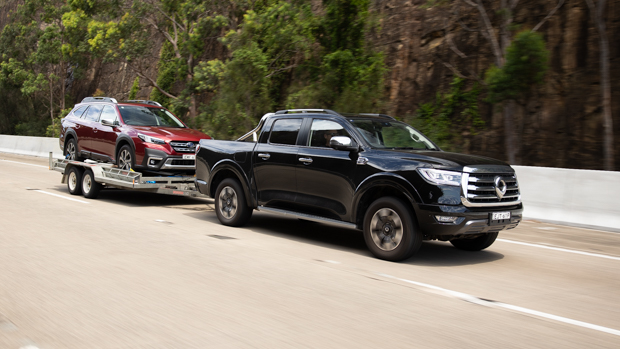
After the Outback had finished its big test by pulling the Mazda, we loaded the 1650kg Subaru wagon onto the trailer and hitched it up behind the GWM Ute for a towed mass of 2700kg – or 90 percent of the GWM Ute’s 3000kg rating.
Propelling tow test driver Ponch out onto an uphill stretch of Sydney’s northbound M1 motorway was the GWM’s modest 2.0-litre turbo-diesel four-cylinder making 120kW/420Nm – around 20 percent less than rivals like the Hilux (150kW/500Nm), Ranger (157kW/500Nm) or D-Max (140kW/450Nm).
While having a lack of outright grunt may not be as much of an issue on a flat landscape, the M1, in particular, is well-known for its punishing hills and hostile traffic behaviour, often requiring changes in speed while covering long ascents, making it a tough test for engine and gearbox.
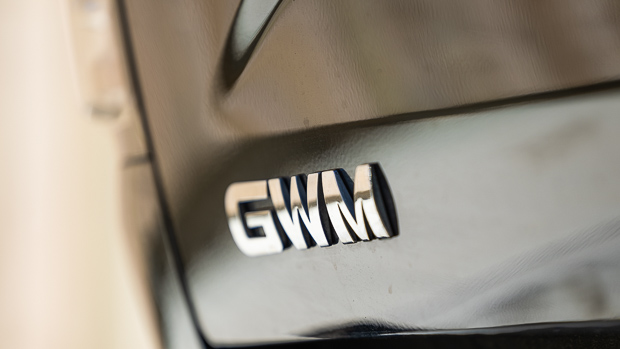
After hooking up the GWM to the trailer, we set out onto the arena to climb the first of many hills and the first flaw was immediately apparent.
The ZF-sourced eight-speed torque converter transmission is a real highlight of the GWM but in ‘Normal’ mode the tune is far too conservative and robs the ute of much-needed grunt. Toggle the ute into ‘Sport’ mode, however, and this issue is quickly rectified.
The lack of outright punch meant momentum was incredibly important on the sharp inclines, though deputy editor Nathan Ponchard found no issue sustaining speed up long hills and praised the smoothness of the engine as it hummed away at 3300rpm.
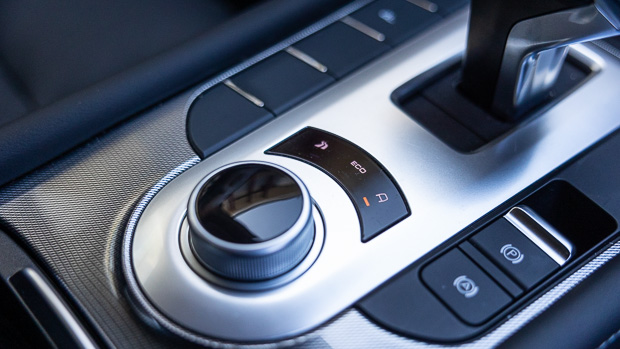
In contrast to the Outback which kept its occupants quite cool on the sweltering 35-degree day while towing the MX-5, the air conditioning of the GWM was unable to produce enough cold air in the cabin while the motor was under maximum strain.
Utes are well known for providing their smoothest ride once some weight is on the tow ball or in the tray, thanks to the popularity of the leaf-spring setup on the rear axle, and while the GWM did benefit from the extra weight the ride was still quite jittery.
In saying this, the GWM still felt sure-footed with the best part of three-tonnes trailing behind it and ultimately this is an incredibly desirable trait in a tow vehicle – it’s just that some rivals (particularly the V6 Amarok) make towing these kinds of really heavy loads that much more effortless.
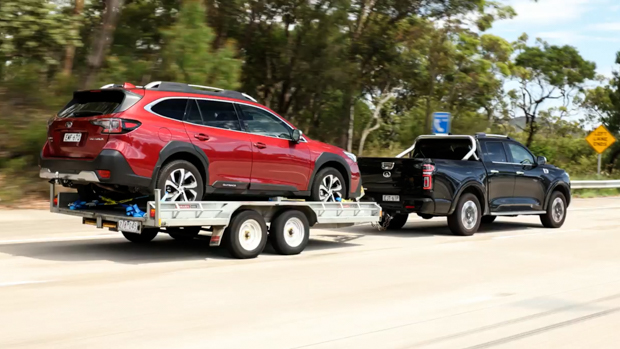
While the GWM Ute offered a commendable performance while towing the Outback, it’s worth noting that it performed far better when we swapped out the Subaru for the far lighter Mazda. There is a huge difference in towing performance with the Great Wall with 2000kg hitched versus 2700kg.
With the final and heaviest challenge the GWM was scheduled to face now ticked off the list, it’s nearly time for us to bid farewell to this budget bruiser and we’ll deliver you our full and comprehensive conclusion next month.
| Kilometres this month | 2120 |
| Fuel economy this month | 10.0L/100km |
| Running costs this month | $380 |
It was a bold mission to undertake – drive our long-term GWM Ute Cannon-X more than 2000 kilometres to the far reaches of the outback across New South Wales and South Australia – testing just how durable this Chinese ute really was.
It would be a huge undertaking, not just for man but machine, too, for some of the roads in the outback are as barren and rugged as they come. And it was that much harder for the GWM given we’d brought along two tried-and-tested models to compare it against.
In its company was the Toyota Hilux Rogue – a ute worth $70,200 before on-road costs – and the Isuzu D-Max in LS-U specification, priced in at $59,400 before on-road costs. Both are serious contenders in this segment and rank highly in the best-selling vehicle figures, especially the Hilux which has a big name down under as the best selling vehicle in Australia.
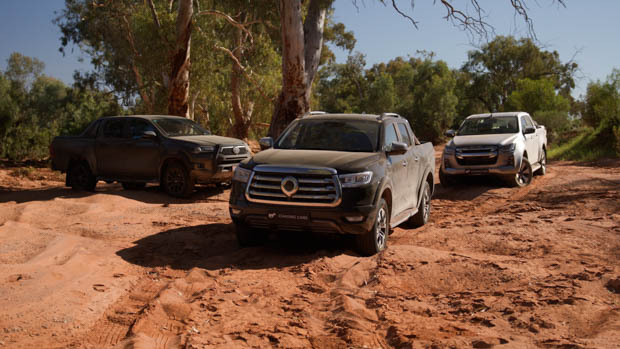
The journey began in Sydney and would finish in Adelaide, but the three of us – Nathan ‘Ponch’ Ponchard, Alek Hoskins and I – would pilot these dual-cab utes across vast stretches of nothingness to rural towns such as Hillston, Broken Hill and Silveton in the quest of the roughest roads in the state.
We certainly found rough roads, not far outside of the town of Hillston, which we had to endure for 180 kilometres on the way to Broken Hill. Rough corrugations, huge potholes and washouts were all part of the journey after months of rain – rare for the outback – and the GWM did it all with relative ease. No leaks from the suspension, nothing broken. We were pleasantly surprised.
The Chinese built dual-cab was the cheapest ute on test by a fair margin at $44,490 driveaway, but with it came less power and performance than the other two utes on the trip. Its small 2.0-litre turbo-diesel four-cylinder engine only makes 120kW/400Nm which might be okay for city driving and general duties but the problem came when it was time to overtake a large road-train or truck on a wide stretch of highway.
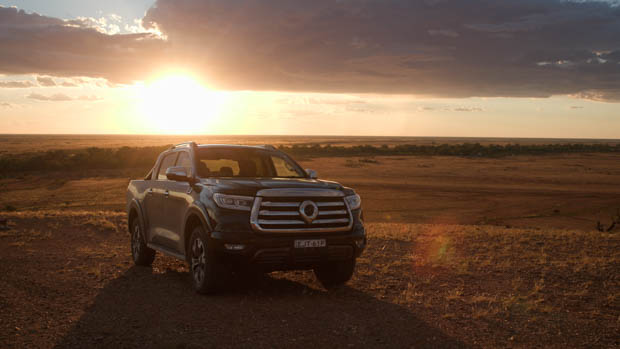
On the negative side of the ledger, the GWM just didn’t have adequate grunt to make passing cars a breeze – if anything it felt very slow hanging out on the wrong side of the road. Power isn’t everything, but it sure is an important feature for country touring when you’ll need to overtake. Keep in mind our payload was relatively light and we weren’t towing – this ute is rated to put 3000kg on the back of it.
A key upgrade we’d look for in future would be a new powertrain option for the GWM Ute that would bring greater performance for Australia. This could be a larger-displacement four-cylinder, a V6 powertrain or even electric motors.
On the trip to Broken Hill and then on to Adelaide, wireless Apple CarPlay and Android Auto connections were an issue, dropping out frequently over the majority of our long drive. iPhones were slightly better but I couldn’t seem to get my Google Pixel phone to work with the GWM for the trip no matter what I did.
Some good points with the GWM included the plush leather seats, a reasonable driving position, good visibility and decent ride in and around the city. Where the GWM falls apart somewhat in terms of dynamics is on rough dirt roads where the front seems to be set up very soft but the rear is firm due to the leaf springs. This causes the front of the car to bounce on its front springs over bumps which feels a little unsettled at times.
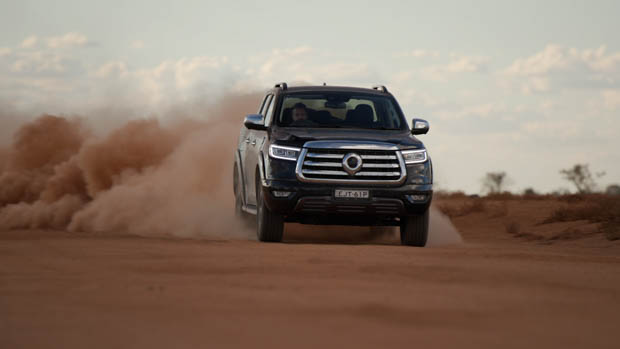
The three of us agreed that the GWM was better set up for city dwellers who do a lot of urban and highway driving, but not necessarily off-roading. On the beach, the GWM Ute Cannon-X would be a lot of fun – particularly if you go through the rather convoluted process to turn off the full-time 4WD system and run in 2WD only mode. There’s not the usual button or switch for this.
The truth of the matter is that most dual-cab buyers do not use their ute off road. Instead, they decide to use it for dropping off their kids at school, going to work and doing errands such as the occasional Bunnings run.
If you do want to take your GWM off-road, it will do so with relative ease, but I would rather be sitting in a Toyota Hilux or Isuzu D-Max if the going gets a little tough. Those two utes are more engaging, fun to drive, more controlled in off-road circumstances and offer more performance than the GWM. Yes, they cost significantly more money, but the GWM sits just that little bit behind the dual-cab standard in my opinion.
It’s a great first effort by GWM at trying to conquer the best dual cabs of all time. Perhaps a second-generation will be the opportunity for GWM to really bring their A-game to this hotly contested segment.
| Kilometres this month | 2487 |
| Fuel economy this month | 10.2L/100km |
| Running costs this month | ~$390 |
Given that I’m someone who lives track days and performance cars, why would I put my hand up to run a dual-cab ute as my long-termer? Simple – it suits my lifestyle outside the Chasing Cars office.
I previously owned a PX1 Ford Ranger 4×2 dual-cab for about three years, which towed race cars and ferried jerry cans full of E85 fuel, whole engines, gearboxes and more wheels than I can poke a stick at. These tasks aren’t something you want to be doing in a $40K medium SUV but are definitely something right up the alley of a robust dual-cab.
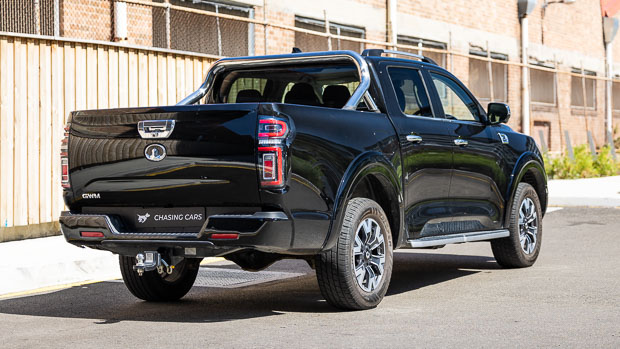
As for the GWM Ute Cannon-X, well quite simply I’m curious. It punches far above its weight in terms of value for money – its $40,990 list price being $13,000 less than a Mitsubishi Triton GSR and $26,000 less than a bi-turbo Ford Ranger Wildtrak – and yet wants for little when it comes to equipment. Not only does the Cannon-X match (and in many cases exceed) the spec of equivalent range-topping dual-cabs, but it’s the only vehicle in the segment to be awarded a five-star rating under ANCAP’s 2021 testing protocol, which is a huge point for family and lifestyle buyers.
With a view count of 206,000 and more than 1100 comments at the time of writing on our video review of the GWM Ute Cannon-X on YouTube, many of you Chasing Cars fans seem really interested in what it’s like to live with every day, and whether there’s any catch to its low price of entry and long equipment list.
There is no catch in the quality of its components, with GWM spending money on a German eight-speed ZF transmission, Borg Warner transfer case and Bosch safety electronics, yet as I reach for the GWM keys and fire up the 120kW/420Nm 2.0-litre turbo-diesel four-cylinder every morning, I’ve started to notice some corner-cutting.
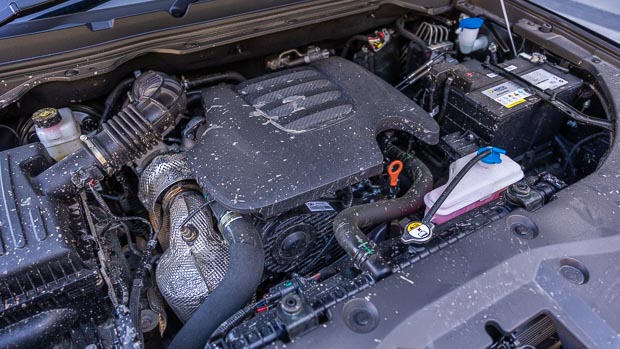
Sometimes it’s simple things like the lack of a dome light over the rear seat, or the trip computer that frustratingly cannot be accessed while lane-keep assist is enabled through the infotainment.
Other annoyances are more significant, like the three-mode electric power steering that is vague and heavy – especially when it’s in Sport. Yet the real issue is on the highway where the Ute Cannon-X seems to lack front castor – you apply 15-degrees of steering angle and the front wheels offer zero response, which means you’re constantly working the helm if the road isn’t dead straight.
The adaptive cruise control seems to mostly work well, though it can waver around the set speed and will blow out by 5km/h or so when cresting over a hill – not ideal in a state currently laced with unmarked mobile speed cameras! Is this a total deal-breaker? I don’t think so because it’s great the hardware is included at this price – it’s just that some of the GWM’s tech lacks the last 10-15 percent of fine tuning to make it truly useful.
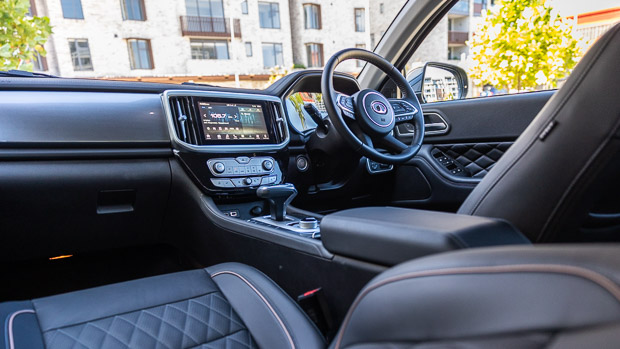
Away from the freeway and back in town, it’s the GWM’s cabin that really wows – it’s hard to believe that the Cannon-X is over $10,000 less costly to buy than a range-topping Mitsubishi Triton. Not only does the design look and feel swish, it’s also packed full of features like a leather-appointed steering wheel (where plastic is the norm at $40K) with reach and height adjustment, complementing the comfort of the plush, quilted leather upholstery and six-way electric adjustment for both front seats that enables you to get nice and low.
Add to that a generous 7.0-inch digital instrument cluster which is pleasant to look at (though why it needs three fuel gauges that all read differently I don’t know). Some of the curious English translation in the 9.0-inch central touchscreen is a minor irritation, but the three layers of menus to jump through to turn off lane-keep assist is more frustrating. But I reckon most of these small annoyances are little more than a software update away from being fixed – making the Cannon-X, on the whole, a really impressive machine.
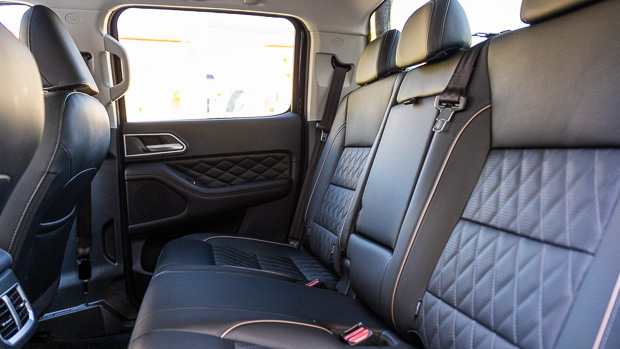
Even the build quality is good. It’s already clocked up 5500 rather tough kilometres and there are no signs of any rattles or creaks, though it’s yet to tackle outback conditions.
This could all change over the next six months as I plan on getting plenty of sand and dirt under the GWM’s Cooper Discoverer AT tyres, as well as throwing a full payload in the tray to test its laden ride and towing my Toyota 86 race car on a 1200km round trip down to Winton Raceway in Victoria.
On its more mundane weeks, the Cannon-X will be doing the hard yards as the Chasing Cars battle truck, hopefully getting us to all of our video locations faultlessly. But so far, so good.
Key specs (as tested)
About Chasing cars
Chasing Cars reviews are 100% independent.
Because we are powered by Budget Direct Insurance, we don’t receive advertising or sales revenue from car manufacturers.
We’re truly independent – giving you Australia’s best car reviews.
The estimate provided does not take into account your personal circumstances but is intended to give a general indication of the cost of insurance, in order to obtain a complete quote, please visit www.budgetdirect.com.au. Estimate includes 15%^ online discount.
^Conditions Apply
Budget Direct Insurance arranged by Auto & General Services Pty Ltd ACN 003 617 909(AGS) AFSL 241 411, for and on behalf of the insurer, Auto & General Insurance Company Limited(ABN 42 111 586 353, AFSL 285 571).Because we don’t know your financial needs, we can’t advise you if this insurance will suit you. You should consider your needs and the Product Disclosure Statement before making a decision to buy insurance. Terms and conditions apply.
Indicative quote based on assumptions including postcode , 40 year old male with no offences, licence suspensions or claims in the last 5 years, a NCD Rating 1 and no younger drivers listed. White car, driven up to 10,000kms a year, unfinanced, with no modifications, factory options and/or non-standard accessories, private use only and garaged at night.
^Online Discounts Terms & Conditions
1. Discounts apply to the premium paid for a new Budget Direct Gold Comprehensive Car Insurance, Third Party Property Only or Third Party Property, Fire & Theft Insurance policy initiated online on or after 29 March 2017. Discounts do not apply to optional Roadside Assistance.
2. Discounts do not apply to any renewal offer of insurance.
3. Discounts only apply to the insurance portion of the premium. Discounts are applied before government charges, taxes, levies and fees, including instalment processing fees (as applicable). The full extent of discounts may therefore be impacted.
4. We reserve the right to change the offer without notice.